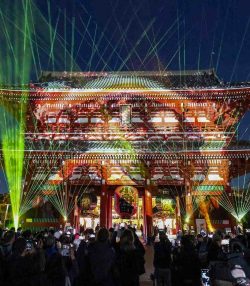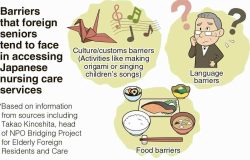Secrets of Kyoto / Octopus Girls and Snake Women: How Stalls for Gawking at Curiosities Birthed a Kyoto Shopping Street
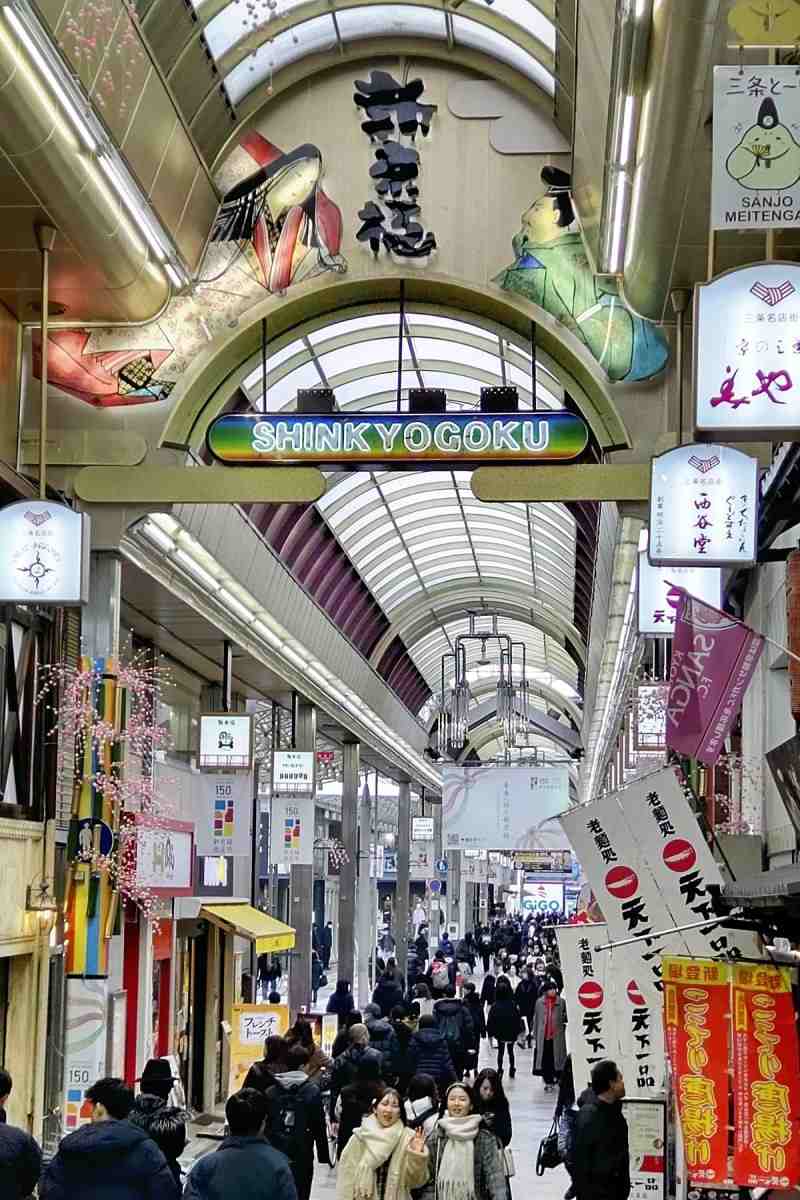
Shinkyogoku, a “Kyoto-esque” shopping district in Nakagyo Ward, Kyoto
11:34 JST, January 22, 2024
If you’re after the most Kyoto-esque entertainment hub, then head to Shinkyogoku. This pedestrian-only street stretching about 500 meters from north to south is lined with 140 stores, including souvenir shops targeting students on school trips, casual clothing stores, restaurants, video arcades and a movie theater, as well as seven temples and one shrine.
Shinkyogoku, in Kyoto’s Nakagyo Ward, is a relatively new entertainment area for the city, set up by the Kyoto prefectural government in 1872. Before this, the street was an assemblage of temples and shrines.
The cluster of holy places was created when warlord Toyotomi Hideyoshi had temples across the city brought here as part of a city-wide renovation in 1585, shortly before he unified the country.
Since the middle of the Edo period (1603-1867), the area had bustled with stores catering to worshippers. Many of them were cheap or sensational, with tents showing unusual tricks, goods, beasts and people — such as snake women, octopus girls and long-necked women — takeout-only food services and shooting galleries with toy bows.
Seiganji temple is known as one of the birthplaces of rakugo storytelling. It is not the sole birthplace because rakugo was created by different people in Kyoto, Edo (now Tokyo) and Osaka around the same time (1684-88).
At the temple, chief priest Anrakuan Sakuden told stories from his own experiences as well as of things he heard and read in a way that was funny, satirical, didactic and enlightening, aiming to spread Buddhist teachings. This led to today’s rakugo.
Sakuden published an eight-volume collection of stories called “Seisuisho,” featuring 1,039 works, some of which are still performed on stage today.
Over time, gates were set up in the walls that separated the temples and shrines, making it easier for people to pass through. Eventually, a single road was formed, which became today’s Shinkyogoku street.

Seiganji temple, one of the birthplaces of rakugo. A statue of Amida Buddha looks out from inside the main hall.
Some temples have sold their land and relocated, but seven temples — including Seiganji — and one shrine still remain, though with much reduced precincts, having sold off some of their holdings.
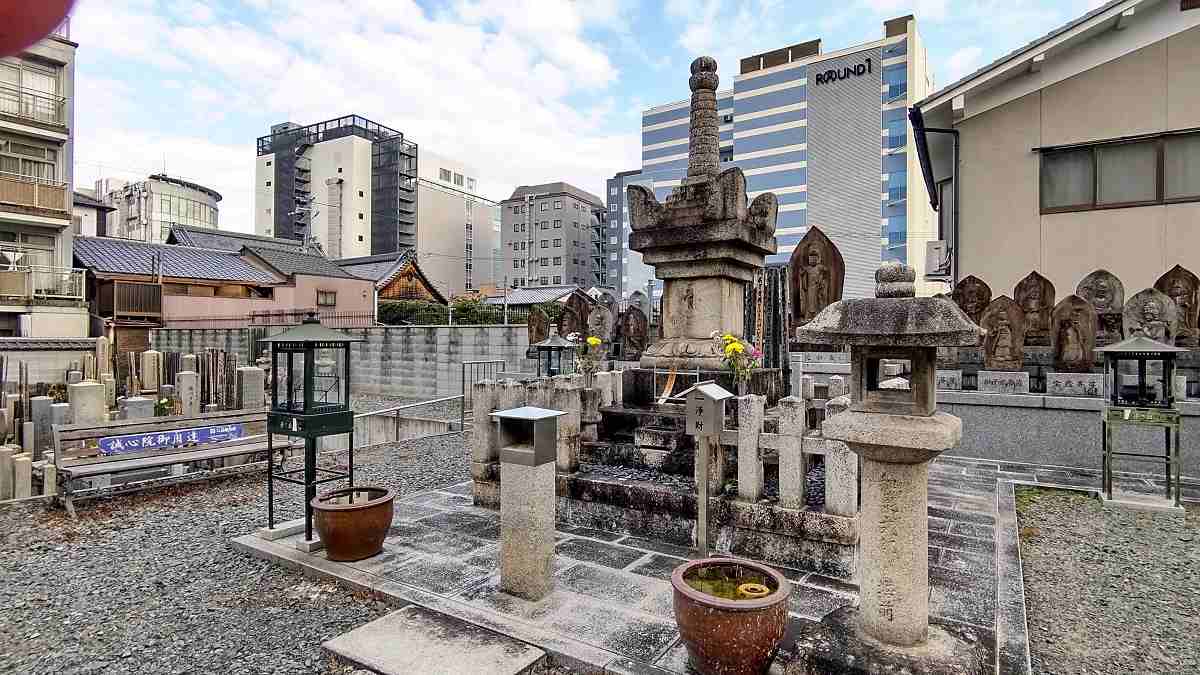
The tomb of Izumi Shikibu, a female poet of the Heian period (794-late 12th century), stands behind Seishinin temple, part of Shinkyogoku.
Stores here have gone through one craze after the other.
In the Meiji period (1868-1912), there were many playhouses performing gidayu (dramatic recited narratives accompanied by shamisen), rokyoku narrative singing and rakugo.
In 1897, Kyoto-born entrepreneur Katsutaro Inabata brought a cinematograph invented in France in 1895 to Japan, turning Shinkyogoku into a movie theater district. There were 20 theaters during Japanese cinema’s first golden age around 1930.
Shochiku Co., a theater company founded in 1895, secured a license to run a playhouse in Shinkyogoku. The playhouse was later converted to a movie theater, but Shochiku continued to hold performances, and today the company is the sole entity creating and putting on kabuki plays in the country.
All kabuki theaters in Japan — Minamiza Theatre near Shinkyogoku, Kabukiza and Shinbashi Enbujo theaters in Tokyo, and Osaka’s Shochikuza Theatre — are owned by Shochiku.
Around 1960, the growing number of souvenir shops on Shinkyogoku became an essential part of school trips for students visiting the old capital. Around 1975, there were about 60 shops in Shinkyogoku just for souvenirs.
In recent years, more and more Japanese souvenir shops and food vendors have popped up to serve the growing crowds of foreign tourists.
And since changing with the times is so typical of Kyoto, Shinkyogoku is naturally the most Kyoto-esque shopping street.
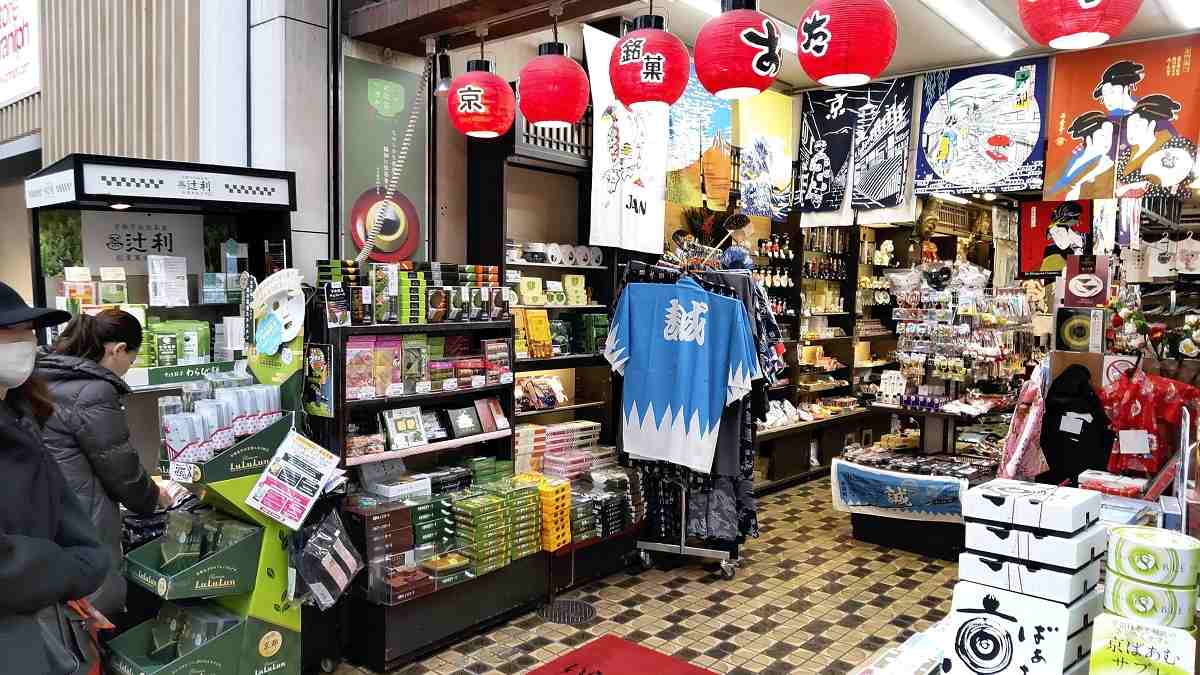
A souvenir shop in Shinkyogoku
"JN Specialities" POPULAR ARTICLE
-

The Japan News / Weekly Edition (12/12-12/18)
-

Noodle Dining Shunsai / Rich Oyster Ramen to Savor at Odasaga; Experienced 68-year-old Owner Creates Numerous Ramen Varieties
-

The Japan News / Weekly Edition (12/5-12/11)
-

People Keep Loved Ones’ Ashes Close in Special Jewelry, Small Urns as Unique Way to Memorialize Them
-
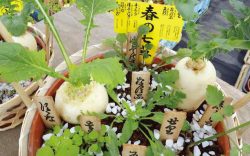
The Japan News / Weekly Edition (12/19-12/25)
JN ACCESS RANKING
-

Tokyo Economic Security Forum to Hold Inaugural Meeting Amid Tense Global Environment
-

Keidanren Chairman Yoshinobu Tsutsui Visits Kashiwazaki-Kariwa Nuclear Power Plant; Inspects New Emergency Safety System
-

Imports of Rare Earths from China Facing Delays, May Be Caused by Deterioration of Japan-China Relations
-

University of Tokyo Professor Discusses Japanese Economic Security in Interview Ahead of Forum
-

Japan Pulls out of Vietnam Nuclear Project, Complicating Hanoi’s Power Plans



